by Valentina Piccini
A look at the exhibition “Raffaello Giovane a Città di Castello”, accompanied by a rich iconographic apparatus, novelties and 17 essays written by some of the most important scholars of the artist in over 200 pages of the book dedicated The exhibition “Raffaello giovane a Città di Castello e il suo sguardo” in the Municipal Art Gallery of Città di Castello is nearing its end. It will close its doors on January 9, 2021 with a success of visitors that only in the first 15 days of opening has reached a thousand attendances.
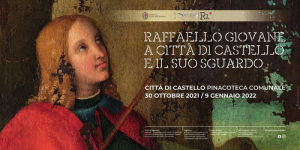
As part of the side initiatives was presented the catalog, over two hundred pages that are a masterpiece for studies of young Raffaello Sanzio, with particular attention to the experiences that the painter lived in Città di Castello between 1499 and 1504.
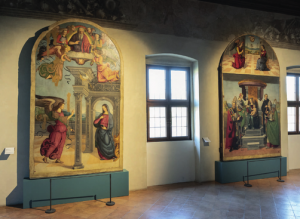 Edited by Laura Teza and Marica Mercalli was published by Silvana Editoriale, presents a rich iconographic apparatus and is accompanied by 17 essays written by some of the most important scholars of Raphael on the international scene (Filippo Camerota, Tullia Carratù, Angela Cerasuolo, Matteo Ceriana, Donal Cooper, Sybille Ebert-Schifferer, Sylvia FerinoPagden, Alessandra Ferlito, Tom Henry, Rudolf Hiller von Gaertringen, Francesca Mavilla, Marica Mercalli, Laura Picchio Lechi, Giorgia Pinto, Matteo Procaccini, Maria Rita Silvestrelli, Francesco Paolo Di Teodoro, Laura Teza, Carla Zaccheo), as well as a section dedicated to the critical edition of documents relating to the presence of the young Raphael in Città di Castello.
Edited by Laura Teza and Marica Mercalli was published by Silvana Editoriale, presents a rich iconographic apparatus and is accompanied by 17 essays written by some of the most important scholars of Raphael on the international scene (Filippo Camerota, Tullia Carratù, Angela Cerasuolo, Matteo Ceriana, Donal Cooper, Sybille Ebert-Schifferer, Sylvia FerinoPagden, Alessandra Ferlito, Tom Henry, Rudolf Hiller von Gaertringen, Francesca Mavilla, Marica Mercalli, Laura Picchio Lechi, Giorgia Pinto, Matteo Procaccini, Maria Rita Silvestrelli, Francesco Paolo Di Teodoro, Laura Teza, Carla Zaccheo), as well as a section dedicated to the critical edition of documents relating to the presence of the young Raphael in Città di Castello.
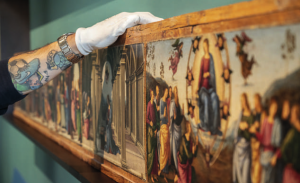 Among the novelties, the scientific color reconstruction of the first documented work of Raphael, the Coronation of Saint Nicholas of Tolentino, edited by Francesco Paolo Di Teodoro and Filippo Camerota, visible in the exhibition through a digital installation produced by the Museo Galileo in Florence, and the scientific account of the important restoration work, by the Central Restoration Institute (ICR), the banner of the Brotherhood of SS. Trinità, the only mobile work of the artist left in Umbria, now located at the Municipal Art Gallery of Città di Castello in the same room of the “Martirio di San Sebastiano’, by Luca Signorelli, one of the most studied artists by Raffaello in his youth. The restoration has allowed to fill some of the gaps present in the work and left ‘exposed’ in the previous intervention of 2006, always edited by the ICR.
Among the novelties, the scientific color reconstruction of the first documented work of Raphael, the Coronation of Saint Nicholas of Tolentino, edited by Francesco Paolo Di Teodoro and Filippo Camerota, visible in the exhibition through a digital installation produced by the Museo Galileo in Florence, and the scientific account of the important restoration work, by the Central Restoration Institute (ICR), the banner of the Brotherhood of SS. Trinità, the only mobile work of the artist left in Umbria, now located at the Municipal Art Gallery of Città di Castello in the same room of the “Martirio di San Sebastiano’, by Luca Signorelli, one of the most studied artists by Raffaello in his youth. The restoration has allowed to fill some of the gaps present in the work and left ‘exposed’ in the previous intervention of 2006, always edited by the ICR.
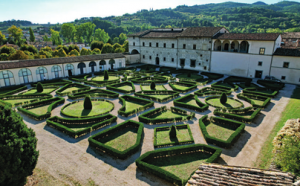 Thirty-one pages are dedicated to the works on display, some of which have been reread in the light of new studies, offering important unpublished information. The three fragments of the Baronci Altarpiece and three drawings by Raphael in the exhibition are analyzed, in addition to the works of Giovanni Santi, Perugino and Pintoricchio, fundamental for the training of the artist. Some plates by Luca Signorelli, Girolamo Genga and Francesco Tifernate are examined and a section has been dedicated to some copies, painted or printed, of the famous Sposalizio della Vergine, the last work made by the artist in the city.
Thirty-one pages are dedicated to the works on display, some of which have been reread in the light of new studies, offering important unpublished information. The three fragments of the Baronci Altarpiece and three drawings by Raphael in the exhibition are analyzed, in addition to the works of Giovanni Santi, Perugino and Pintoricchio, fundamental for the training of the artist. Some plates by Luca Signorelli, Girolamo Genga and Francesco Tifernate are examined and a section has been dedicated to some copies, painted or printed, of the famous Sposalizio della Vergine, the last work made by the artist in the city.
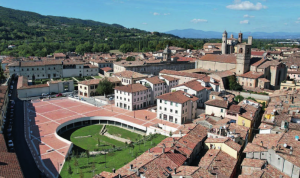 The presentation of the catalogue was attended by Professor Michela di Macco, president of the National Committee for the 500th anniversary of the death of Raffaello Sanzio, and Professor Alessandro Zuccari, Professor of History of Modern Art at La Sapienza University of Rome and Academic Linceo. Also present were the two curators of the exhibition, Marica Mercalli and Laura Teza, Antonella Tiranti, director of the Tourism Service of the Umbria Region, the City Councillor for Culture of Città di Castello, Michela Botteghi and the Honorable Walter Verini.
The presentation of the catalogue was attended by Professor Michela di Macco, president of the National Committee for the 500th anniversary of the death of Raffaello Sanzio, and Professor Alessandro Zuccari, Professor of History of Modern Art at La Sapienza University of Rome and Academic Linceo. Also present were the two curators of the exhibition, Marica Mercalli and Laura Teza, Antonella Tiranti, director of the Tourism Service of the Umbria Region, the City Councillor for Culture of Città di Castello, Michela Botteghi and the Honorable Walter Verini.
“The Committee – said of Macco – greatly appreciated this scientific project and gave its contribution so that it could be transferred into the catalog. I am very satisfied with this because Città di Castello is a crucial moment to understand the young Raffaello, his ability to look around, to transpose and combine in a completely innovative way for his ability to synthesize inventiveness. With this exhibition the artistic, historical and cultural heritage is further enriched and Città di Castello is the protagonist of this path”.
